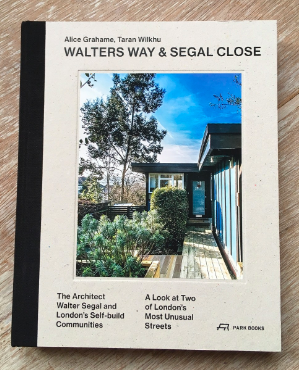RELATIONSHIP TO LAND
The relationship to land takes a few forms:
> The literal reclaiming of space and right to the city (community gardens, self-build projects)
> Observation through walks and mapping of shapes
> Collecting of usable/edible plants
> Using things that grow as art material
> Sharing recipes, herbs & spices, seeds
> Growing food
> Making kinships with the surroundings and other species
> Finding/making commons
> Memories and history of a place
Walter Segal created a method which allowed anyone to self-build their home using standard sized materials easily accessible from a local timber yard using basic tools (saw, hammer, drill). His method allowed for anyone with only basic training in woodwork build their own house.
His method was used to build social housing in South East London, you can still see the communities that were built by him in Walters Way and Segal Close. I volunteered to build a RUSS Community Land Trust hub based on this.

I then discovered this book by Enzo Mari: “Autoprogettazione?” (roughly translated as “Self-design?”). It is a manual which includes furniture projects that could be realised or adapted by anyone using wooden boards and simple tools (a hammer and nails).
I built a shelf for the 'Homeware Hibernation' (2020) duo exhibition (with Jake Caleb). This was a culmination of months of growing, collecting and storing, we’ve been gathering materials on walks and in the kitchen over the summer and early autumn to make natural dyes: walnuts, avocado skins, tansy flowers, onion peel. We used these to make some homewares such as cushions and candles. The hibernation part came from the desire to pay attention to the rhythms around us. It's easy to get caught up in productivity on a European continent with little visual changes of seasons and same food available at a supermarket irrespective of the season.
<< back
Michel de Certeau 'The Practice of Everyday Life' (Chapter: Walking in the City)
(reading by Expodium)
Comparison of walking to language, the Ceramic Stories workshop (2019) involved mapping shapes of daily routines which looked like a script or a language especially when translated to digital embroidery.
Learning to make and cast bioplastic from potato starch
Making and Growing Biomaterials course, Pastoe, HKU
Making Elderflower cordial with Future Field Collective after a walk to collect the flowers (2020)
I often come back to this book
DOCUMENT 1.5